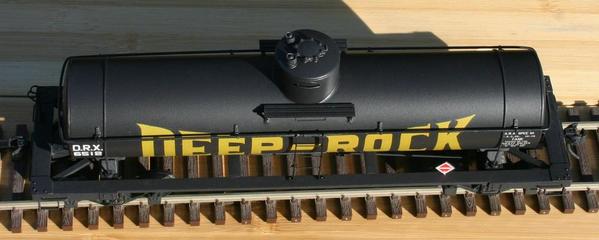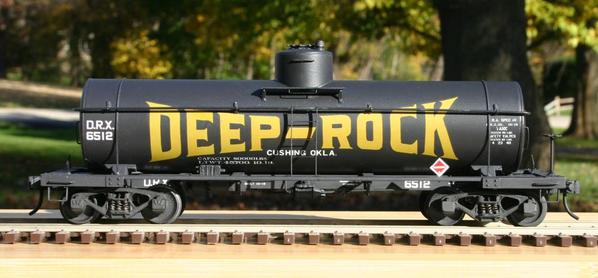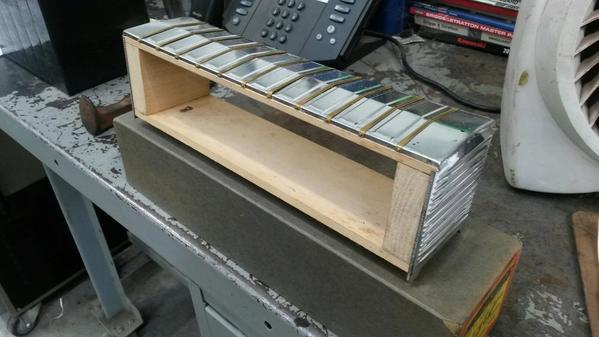Well, the All Nation 8,000 gallon tank car is finally finished. It was a long and arduous process hampered by a poor kit, my lack of skill, and lots of missteps along the way.
I did a fair amount of redesigning of the structure to get the thing together. My Scalecoat I paint went on too rough; I had to sand the tank with 3000 to 12000 sandpaper before I could apply decals. My attempt to apply the 1st Protocraft DEEP ROCK decal was a complete failure. I had coated the surface with the blue label Microscale decal solvent, which not only destroyed the decal but welded it in the wrong place. Off it came requiring more fixes to the paint.
The loss of the Protocraft decal meant I was forced to use the old Walthers decals I had rejected earlier because they were disintegrating. I sprayed the DEEP ROCK decals with one coat of Testors gloss to hold them together. One went on OK. The other broke up. I was able to piece it into position but lost the top part of one of the "E"s. I had to mix and match some paint to fix it. The Walthers "DEEP ROCK" is bigger than the Protocraft which made it more difficult to fit the lower letters to the tank side. I did the decaling before mounting the tank to the frame.
The side ladders were missing from the kit. These were made up from brass. It was extremely difficult to get everything straight and level, from the frame, to the ends, to the tank walks, to the handrails and to the decals. So many compromises were made. In summary this was one tough project, and I can say I'll never build another one of these.













